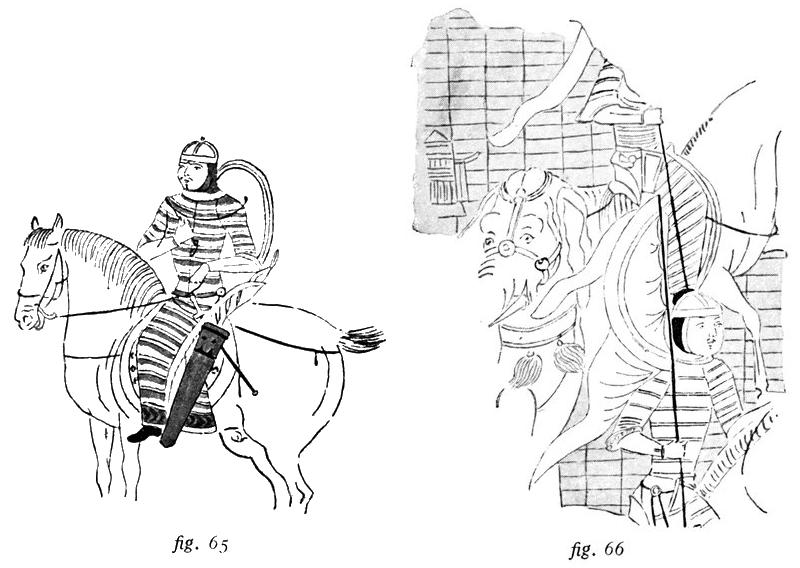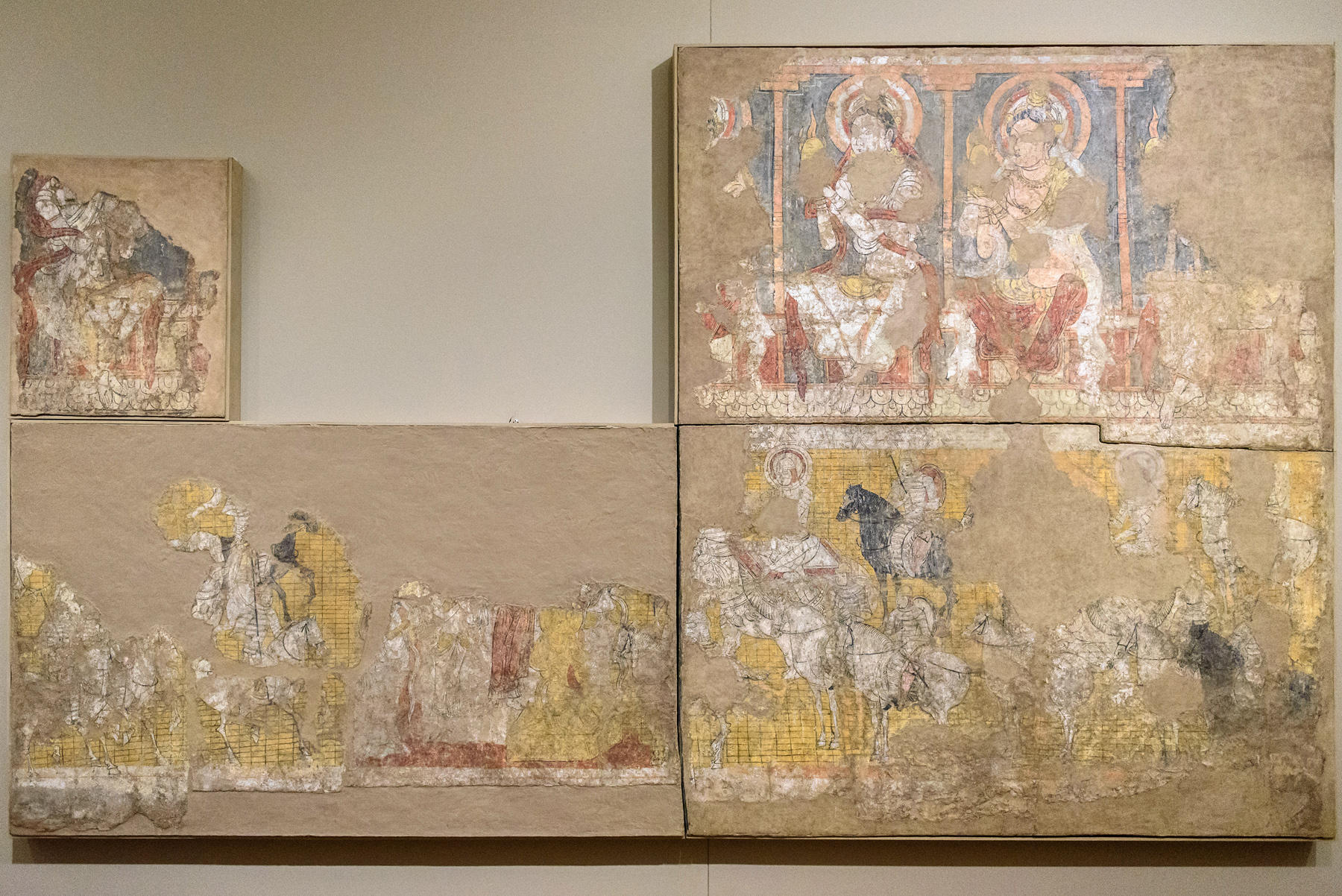
Shop Amazon - Create an Amazon Baby Registry
Horsemen at the Siege of Kushinagara. 'City cave' Šōrčuq. Karashahr, 8th Century AD (?)
 | ||
|
fig. 65 (G. 469a) 'City cave' Šōrčuq. Horseman. Mural. 8th Century. (?). Simple spangenhelm, dark-coloured coif. Longer armour plates, on the forearms military gloves (dästānä p.)? Shield on a belt worn on the back. Bow case of tiger skin, downward tapering quiver. Straight (or slightly curved?) sword with cross guard (as in fig. 69 and 70). |
fig. 66 (G 469b) 'City cave' Šōrčuq. Two riders. Mural. Armour as on fig. 65. Flag in the form of a circular segment, with attached streamers. Related to the form of the Bayeux Embroidery. | |
